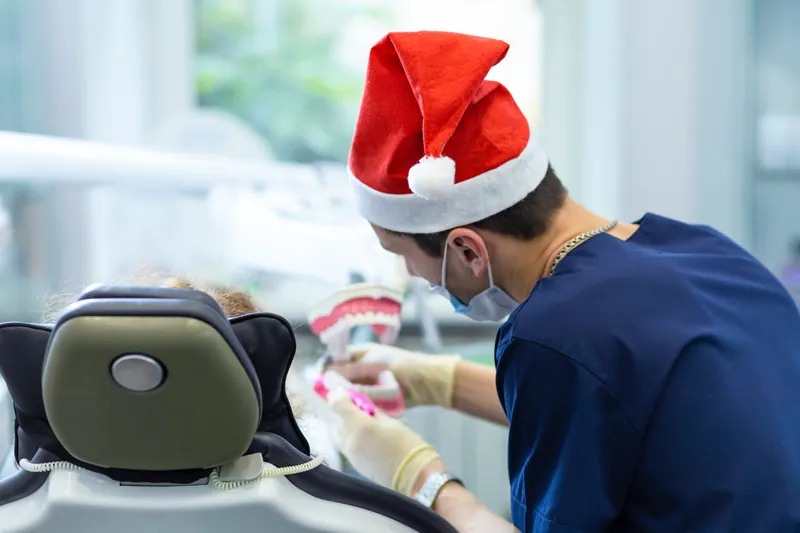Individual dental plans offer a cost-effective solution for managing oral health expenses, especially for those without employer-sponsored coverage. These plans help reduce out-of-pocket costs for routine checkups, cleanings, X-rays, and procedures like fillings or crowns. With predictable monthly premiums and discounted service rates, they provide financial stability and encourage regular preventive care. By addressing dental issues early, individuals can avoid costly treatments later, ultimately supporting their health and long-term savings.
The Rising Costs Of Dental Care
In recent years, Americans have noticed that a simple visit to the dentist can tally up to an unexpectedly high bill. According to data from the Centers for Disease Control and Prevention, nearly half of adults over the age of 30 show signs of gum disease, yet the cost of care continues to prevent many from seeking timely dental help. Even routine services such as cleanings, x-rays, and exams can be expensive if paid entirely out of pocket. In addition to the possibility of unplanned treatments like fillings or crowns, it quickly becomes clear why so many are concerned about dental expenses.
Dental coverage isn’t just for peace of mind—it can dramatically affect how much you spend on your oral health each year. Many people who do not have access to group insurance are searching for affordable individual dental coverage that can keep their teeth healthy without breaking the bank. By enrolling in a dental plan tailored to your specific needs, you safeguard your smile and create a predictable, manageable budget for dental expenses both big and small. Taking steps to secure cost-effective dental coverage can help avoid larger, more expensive problems in the future.
What Are Individual Dental Plans?
Individual dental plans are personal dental insurance policies anyone can purchase directly, without relying on an employer or association. They’re designed for people who may be self-employed, retired, unemployed, or not offered dental benefits at work. These plans often fill a vital gap, primarily as more people work multiple jobs or as contractors, where benefits are not always included.
Most individual dental plans cover a variety of dental care needs: preventive services like cleanings and fluoride treatments, diagnostic care such as x-rays and exams, and restorative procedures like fillings, extractions, and even more advanced work such as crowns or bridges. Policyholders typically pay a monthly premium and share in the costs for specific treatments, which can be much more manageable than the high, unexpected costs of paying entirely out-of-pocket.
How Do Individual Dental Plans Work?
The mechanics of an individual dental plan are designed to be user-friendly and flexible. You’ll start paying a set monthly premium when you choose and enroll in a plan, often just through an online form or quick phone call. Many plans cover basic and preventive care immediately, so you can get started with regular checkups and cleanings as soon as your coverage becomes active.
Other procedures, such as major restorative work, might require a waiting period, typically a few months. As Harvard Health describes, dental plans are structured so that preventive services are often provided with little or no out-of-pocket cost. When it comes to more involved procedures, coverage usually works by the insurer paying a set percentage while you are responsible for the rest. This partnership helps control your costs and risk if those pricey dental surprises arise.
Everyday Dental Expenses And Coverage Examples
- Preventive visits: Cleanings, x-rays, regular exams
- Basic procedures: Fillings, simple extractions, emergency exams
- Primary services: Crowns, bridges, dentures, sometimes even implants
Without dental insurance, these costs can stack up quickly. According to figures compiled by the American Dental Association, patients can expect to pay around $90–$120 per cleaning, $150–$250 for a typical filling, and upwards of $1,000 for a single crown. If your family includes children or you have ongoing oral health needs, annual dental expenses can easily climb into the thousands. By offsetting these costs with a dental plan, members can often reduce charges for major procedures by up to 50%, and sometimes eliminate costs for preventive visits entirely.
Cost-Benefit Comparison: Paying Out Of Pocket Vs. Plan Membership
Does dental insurance pay off? In many cases, the answer is yes. Let’s look at a direct comparison: If you pay out of pocket, a year’s worth of care might be two checkups with cleanings and x-rays ($250–$350), and a single filling ($200), totaling $450–$550 per year. And that’s assuming you have no dental emergencies or need additional treatments.
With a typical individual dental plan, your premium could be about $300–$400 annually. Preventive visits, which are recommended twice a year, would likely be fully covered, while a filling might have a low copay, sometimes around $50. That brings your yearly total to approximately $350–$450, but with the added comfort of insurance if anything else comes up. Over time, and especially for people needing regular care, this cost predictability can bring real financial relief.
Flexibility And Control With Individual Plans
One of the top advantages of individual dental plans is their flexibility. Unlike group plans that can feel one-size-fits-all, individual plans let you select the level of coverage that matches your unique situation. Want to cover just preventive care? You can. Need more comprehensive protection because of past dental issues? That’s available too, often at a reasonable increase in premium. You also get to pick your dentist from an extensive provider network, rather than being limited to a small list. And if your needs change, you can upgrade or modify your plan accordingly, putting you in control and keeping your dental care on your terms.
Who Benefits Most From Individual Dental Plans?
The reality is that almost anyone can benefit, but certain groups will save the most. Freelancers and gig workers, for instance, don’t get benefits from an employer, so a dental plan offers essential protection. Retirees, who may lose dental coverage after leaving the workforce, benefit from being able to continue necessary preventative and ongoing care. Families with children—especially those who don’t have group coverage—can also see significant savings by catching cavities early or addressing orthodontic needs. Students, part-time employees, and anyone between jobs gain the security of continued oral health coverage, which is critical to overall well-being. One retiree recently shared how maintaining a personal dental plan allowed her to get a crown at a fraction of the cost, instead of putting off care because of finances.
How To Choose A Plan That Works For Your Budget
- First, review your average annual dental expenses, including anticipated preventive, basic, and primary services.
- Compare plan features: scrutinize monthly premiums, annual maximums, deductibles, and copays for various procedures.
- Check the provider network to ensure your regular dentist is included or that convenient options are nearby.
- Look closely at policy details, for big-ticket procedures or any exclusions that might affect you or your family.
- Consider any extras—orthodontic, cosmetic, or specialty benefits—if they fit your needs, but only if they add value to your likely usage.
A careful review helps avoid costly surprises and ensures that the plan you choose is affordable upfront and truly cost-saving in the long run.
Final Thoughts: Planning Today To Avoid Costly Surprises Tomorrow
Dental costs won’t be going down anytime soon, but the proper planning and coverage can put care within your reach while protecting your wallet. Whether you’re an independent worker, a retiree wanting to maintain health through every stage of life, or a family striving to keep kids’ teeth healthy, an individual dental plan can empower you with choice, flexibility, and real savings. Smart investing in your dental health today brings confidence, not just in your smile, but in knowing you’ve tamed unpredictable expenses. It’s a proactive way to protect dental health and financial peace of mind for months and years ahead.

I’m Rishabh, the CEO of Meleyrs and a passionate content creator. I specialize in producing clear, fact-based, and informational content across multiple niches, including finance, business, fashion, travel and health tips. My goal is to share accurate knowledge in a way that’s simple, engagingand useful without offering promotions or personal advice.




